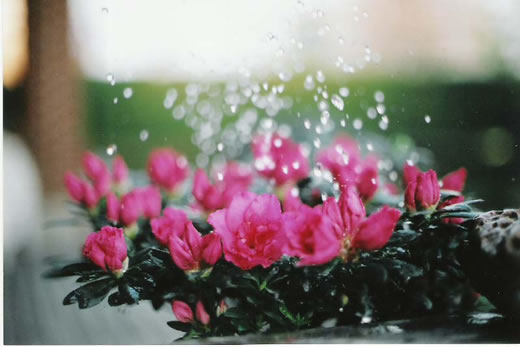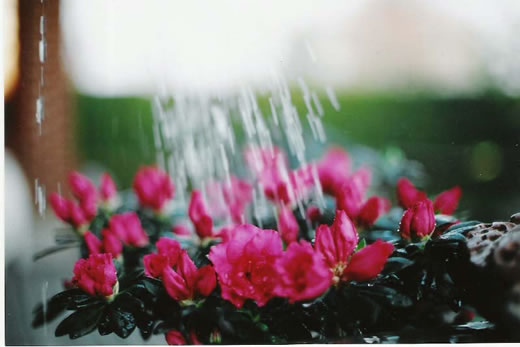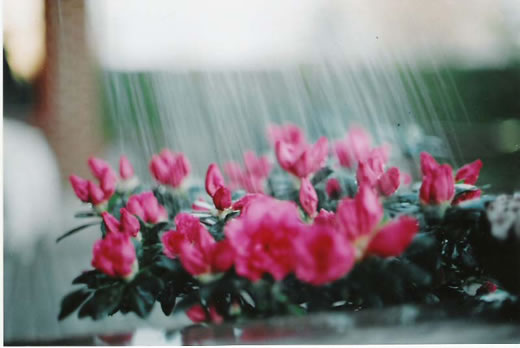 |
P H O T O G R A P H Y C O N T E S T Sponsored by A.J. Hirsch |
Maria Varlan
First Place
2005 OAPT 4U Photo Contest



Image Effect of Different shutter Speeds
The three pictures of nature in motion illustrate the difference in image depending on the shutter speed of the camera. The shutter speed of the camera is measured in rotations per seconds and depending on it, the light is allowed to strike the film for a certain time. The longer the shutter stays open, the slower its speed, the more light is allowed within the camera to strike the film. The three pictures were taken at the same distance, same focus, yet, at three different shutter speeds and inherently allowing three different amounts of light to impress the film.
Picture number one was taken using the fastest shutter speed (1000). The shutter was opened for the shortest period of time, thus printing an instant image of the very moment at which it was captured. Fast shutter speeds are ideal for pictures containing objects in motion. However, when the shutter is opened only briefly, only a small amount of light will attain the film. Therefore, this setting requires a fair amount of background light.
In picture number two, an intermediate speed (125) was used. Whereas the drops are not so well defined, the picture is crisper, since more light hits the film.
Picture number three illustrates a slow shutter speed (30), which permitted light to imprint the film for a longer period of time, thus making the object in motion to seem blurred and also over exposing the film. Slow shutter speeds are best for dim, but still subjects.